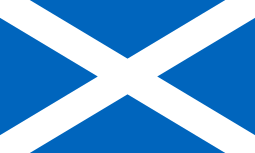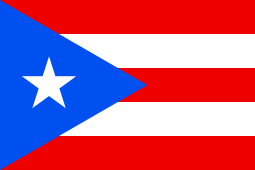Admiral Sportswear
Admiral Sportswear is a British internationally recognised football, cricket, cycling and sportswear brand. It reached the peak of its success in the 1970s and early 1980s through a series of prestigious football team sponsorships.
 | |
| Private company | |
| Industry | Textile |
| Founded | 1914 Leicester, United Kingdom |
| Headquarters | Manchester, United Kingdom |
Area served | Worldwide |
| Products | Sportswear Footwear Accessories |
| Parent | Admiral Sportswear Ltd [1] |
| Website | admiralsportswear |
History
Beginning
The Admiral trademark was created in 1914 by Cook & Hurst Ltd, a Leicester-based company, manufacturing quality underwear and, subsequently, items of sportswear. When England won the World Cup in 1966, Bert Patrick, the owner of Cook & Hurst Ltd, commenced manufacturing and marketing football kits. The kits sales were aimed at the juvenile market and through selling connections in the sports retail trade. Bert Patrick believed that the advent of coloured television would enable him to persuade football clubs to accept personalised kits which his designers would produce and then register them under the Design Copyright Act. There was stiff opposition to his ideas from all sections of the public.
1970s: Leeds and England
Through its connection with Leeds United, Admiral pioneered the introduction and development of the replica kit market in the UK. In the 1973–74 season, Leeds United wore the first visibly branded kit in the English top flight.[2]
Realising the potential of the replica kit market, Admiral brokered a deal with the Football Association in 1974 to produce the first commercially available England shirt that featured a sportswear manufacturers logo. They agreed a five-year contract for a starting payment of £15,000 a year or a 10 per cent royalty.
Other clubs
Admiral signed up other big clubs alongside Leeds United, such as Manchester United[3], Coventry City, Portsmouth, Tottenham Hotspur, Southampton, and West Ham. It also developed outside England, signing sides Aberdeen, Dundee and Motherwell in Scotland, Yugoslavian club Red Star Belgrade, Bundesliga outfit Eintracht Frankfurt, the Italian clubs Bologna and Monza, the Swiss club Servette, Swedish giants Malmö, and the Indian club Kerala Blasters, in addition to the national teams of Belgium, Saudi Arabia and Wales. Admiral also produced kits for many of the NASL teams during the late 1970s and early 1980s, and had a replica licensing deal with some clubs, and for two seasons produced the uniforms for every team in the MISL.
1980s: Decline and rebirth
Admiral began the decade with the launch of a new England kit in 1980, the first new kit in nearly 6 years. This kit was first worn in a 3–1 win over Argentina at Wembley Stadium on 13 May. However, the 1980s marked a period of decline for the Admiral brand, as it began to lose the contracts with the major clubs to domestic rival Umbro and new international entrant Adidas.
Even though Admiral still held the England kit contract, one of the most valuable in the world, the company was declared bankrupt in 1982. The brand reappeared on the market for the 1983–84 season producing the same double pinstripe design for both Leicester City and Notts County. Towards the end of the 1980s Bradford City, Cardiff City, Crystal Palace, Hull City, Swansea City and Wrexham were added to the Admiral roster. It was also the first ever kit maker of Inverness Caledonian Thistle.
1990s
Admiral entered the 1990s well placed to build upon its widespread recognition and continued to supply clubs including Dynamo Kiev, Southampton, Middlesbrough, Bradford City, Charlton Athletic, Wimbledon, Hearts, Motherwell, Rangers, Partizan Belgrade and many more. In 1992 after Leeds United had won the last Football League division One title before the advent of the Premier League they negotiated a deal to make their kits for the following season.
After a period of relative inactivity during the mid-1990s, the Admiral trademark was acquired by Hay & Robertson plc in 1997, and ownership was transferred to International Brand Licensing plc in a demerger in 2002.
2000 and beyond
In 2000, Admiral entered the world of cricket and was the official kit supplier to the England cricket team until 2008 (the sponsorship was then taken over by Adidas). By 2001, it had also become the kit supplier to the West Indies and South Africa cricket teams as well as supplying the Canadian team for the 2003 Cricket World Cup held in South Africa. However, Admiral kept its connection with English football by sponsoring Leeds United until the end of the 2007–08 season.
In 2011, Admiral Sportswear Limited acquired the rights of the Admiral trademark for most of Europe, the Middle East and North Africa, with the intention of revitalizing the heritage sports brand.[4] In the 2010s, Admiral continues to sponsor a number of football teams around the world.[5]
In 2016 Wimbledon won promotion to EFL League One [6] wearing Admiral. This is the highest position the club has held in the football league. In the UK Sainsbury's holds the licence to retail Admiral Gold ranges. In Italy Cisalfa Sport have the exclusive licence to retail Admiral Performance and Essentials.
Marketing
Collaboration
As part of the regeneration project Admiral has started to work and collaborate with different design partners. The first of these was with Represent shown at Milan Fashion Week 2019.[7]
National teams
Club teams
Europe



Asia


Americas




















Cricket teams:
National teams
Former sponsorship
National teams
Europe













































.svg.png)
.svg.png)
.svg.png)




















.svg.png)











Asia
Americas

















.svg.png)
.svg.png)
Cycling
Cricket
References
- https://www.manchestereveningnews.co.uk/business/business-news/iconic-admiral-sports-brand-to-be-revived-856159
- https://www.telegraph.co.uk/men/the-filter/10904012/Meet-the-man-who-created-the-replica-football-shirt-market.html
- https://admiralsportswear.com/our-history/
- "Revitalizing Admiral - The Story So Far" Archived 18 August 2016 at the Wayback Machine. The official Admiral Sportswear website. Retrieved 13 October 2017.
- https://www.manchestereveningnews.co.uk/business/business-news/admiral-sportswear-to-launch-retro-leisure-1214127
- https://www.bbc.co.uk/sport/live/football/36165479
- https://www.complex.com/style/2018/11/represent-admiral
- https://admiral-sports.com/shop/usa_en/news/admiral-partners-with-ac-miracle-hill/
- http://milwaukeetorrent.com/dysania_grid/admiral/
- https://www.usacricket.org/media-release/new-sections-launched-on-usacricket-org/
- http://takhtejamshidcup.com/index.php?option=com_content&view=article&id=184&Itemid=734